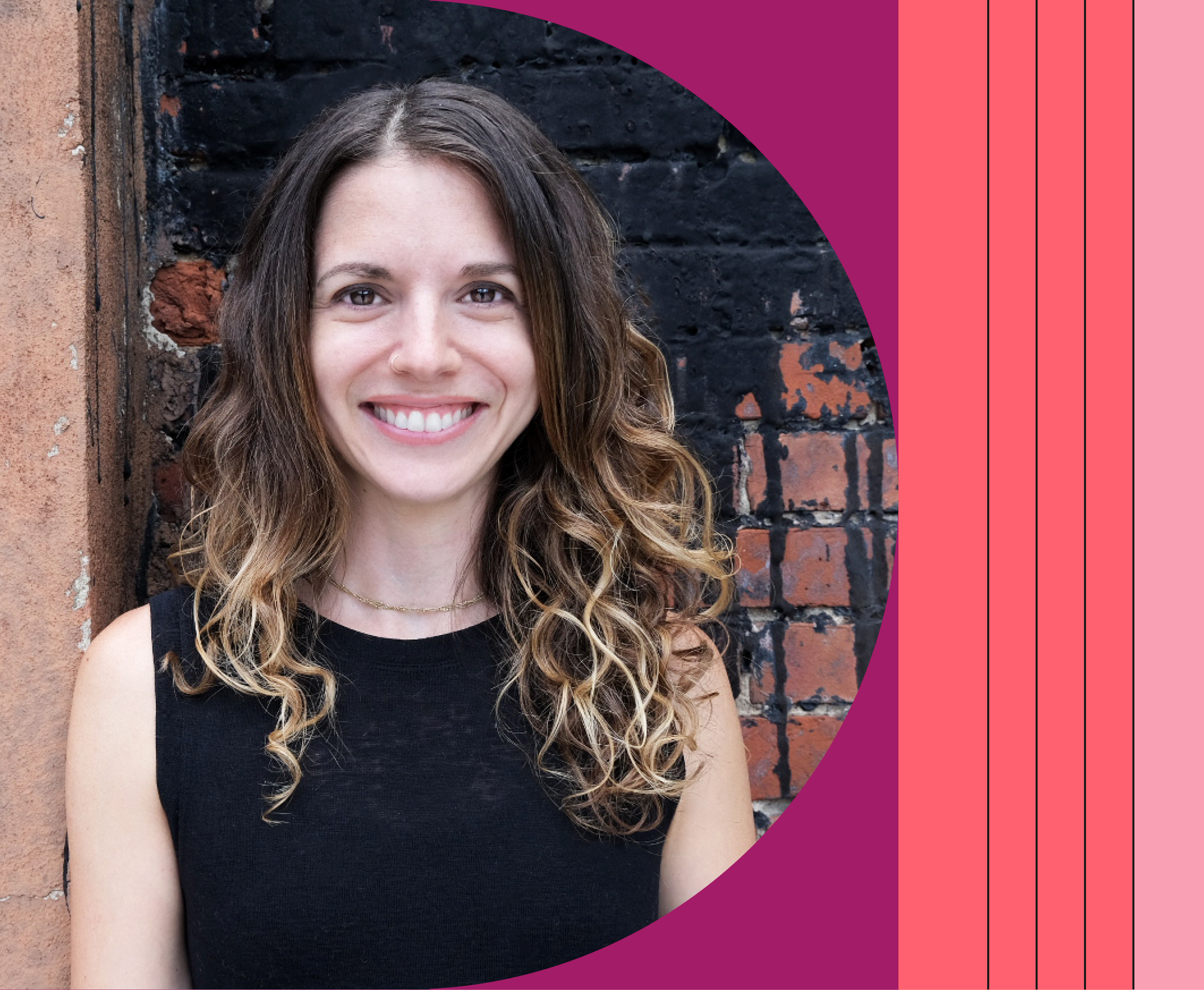Share
Employee Spotlight: Rachelle Somma
Oct 5, 2021

Learn more about Alloy’s Senior Product Designer, Rachelle Nidra Somma, who shares her perspective on the challenges of being a designer with dyslexia and what it’s like to work every day with an invisible disability at Alloy.
How did you get into product design, and what is it like designing at Alloy?
All it took was one teacher in high school to help me realize that I was good at communicating visually, and that set things into motion. After graduating from VCU, I started my career as a print designer until the iPhone came out and changed things for all of us. I had to grow and shift my skills to keep up with the industry, which eventually led me to product design. During this time, I was diagnosed with dyslexia and was getting a better understanding of my disability while fighting the feeling of being embarrassed by it. Then I interviewed at Alloy, an eight-person company at the time. I was excited because I wanted to work on more complicated features, but I was also nervous with this newfound information on my disability.
What is the biggest misconception that people have about dyslexia and invisible disabilities at work?
There are several misconceptions or myths about dyslexia, but the main one that comes to mind for me is that people with dyslexia are labeled as “lazy.” We are far from lazy! In fact, our brains have to work five times harder than others doing the same task, which can result in frustration and mental exhaustion. People with dyslexia often thrive in entrepreneurship, engineering, architecture, and the arts, which is probably why I was drawn to design. We can look at a situation and identify seemingly distinct pieces of information and blend those into a narrative that makes sense to us that most people can’t see.
How does Alloy enable you to do your best work?
Being in fintech and at Alloy in general, we handle some complicated features with new lingo and words that are a dyslexic’s nightmare. I had to come forward with my disability and explain that I may feel overwhelmed by incoming information and struggle to communicate clearly to others through speech or writing. I knew what I wanted to say but could become confused and unable to articulate this.
Luckily, Alloy had already created this safe space for their employees to come forward, ask for help and get the support they needed. I came up with a list for the People Team and managers to reference when they are helping employees with disabilities:
Adapt your communication style. Find out their preferred communication and learning styles (could be a visual learner!) and ask about their general processes. Regular appraisals and check-ins can help the employee to feel comfortable to air their concerns freely.
Make required workplace adjustments. A quiet working environment can make all the difference. Maybe you have a breakout room you can keep free, in case they need it.
Provide a safe space. Keep the door open for them to reach out when there is a problem.
Get to know their strengths and weaknesses. Just ask - they probably already know!
Do your research. Understand what is happening on a neurological level and embrace neurodiversity in the workforce.
Offer positive reinforcement. I can’t stress this enough. These individuals can become self-actualized, satisfied, content, confident human beings, and they will blossom in their role with positive reinforcement.
And lastly, make an effort to understand!





